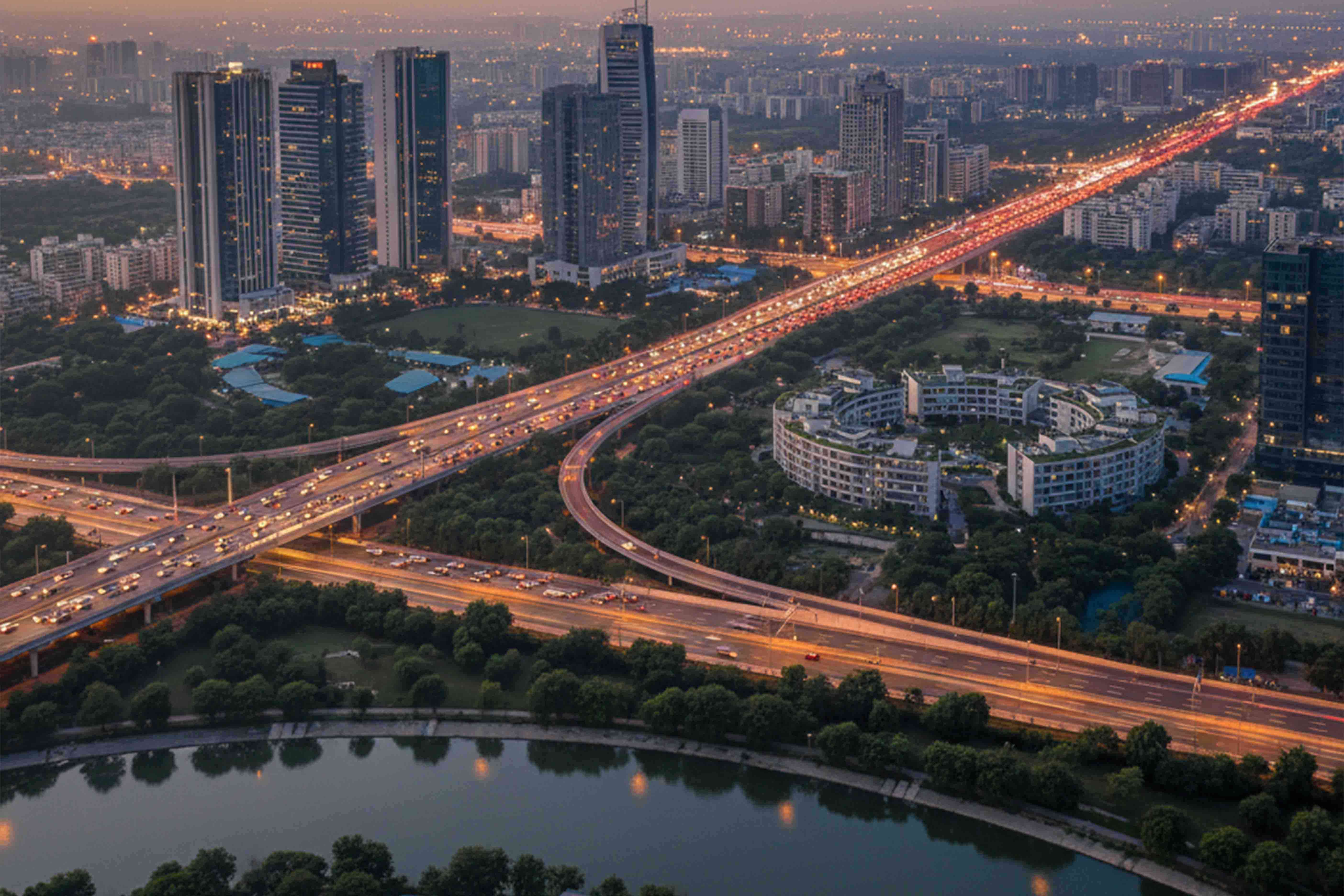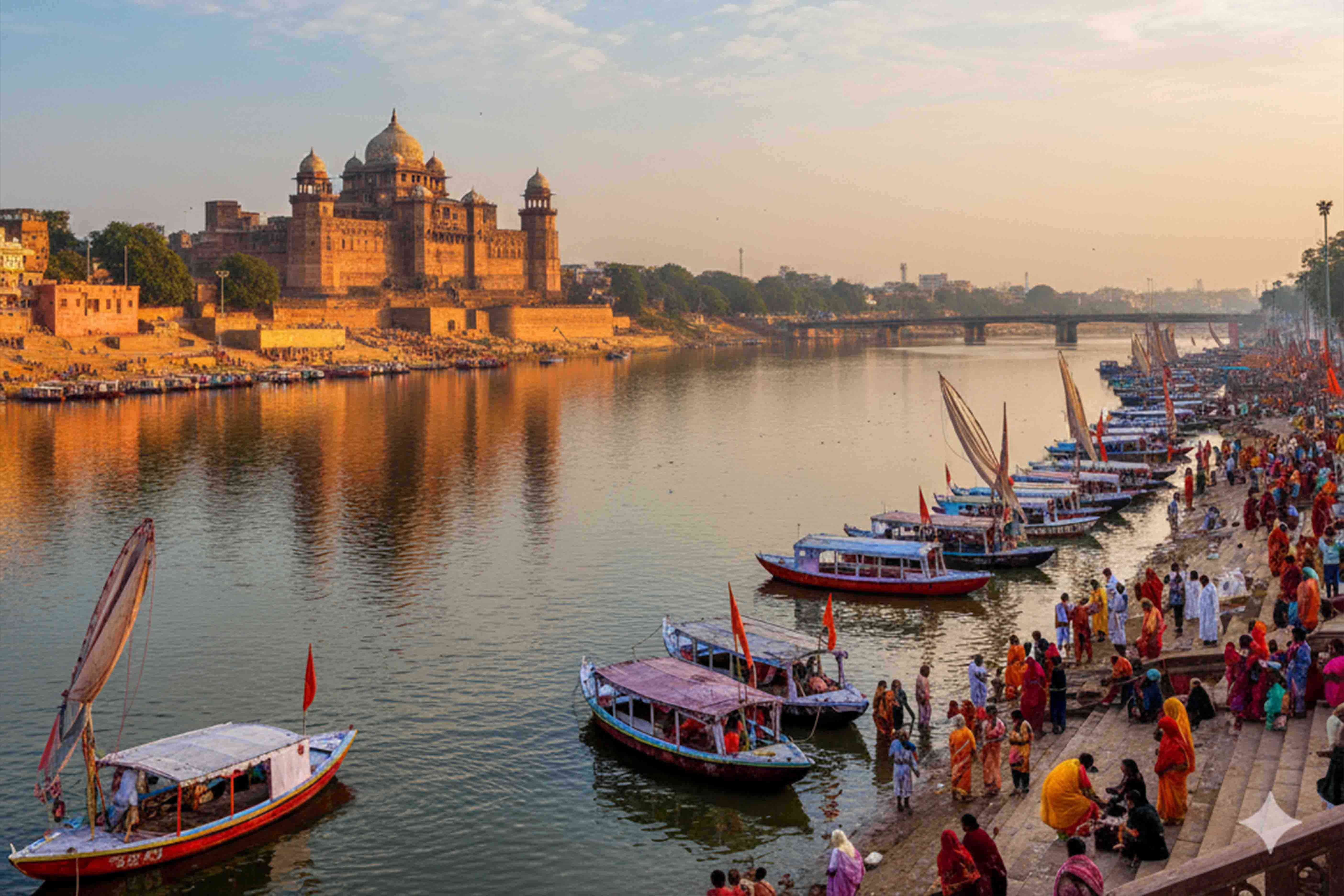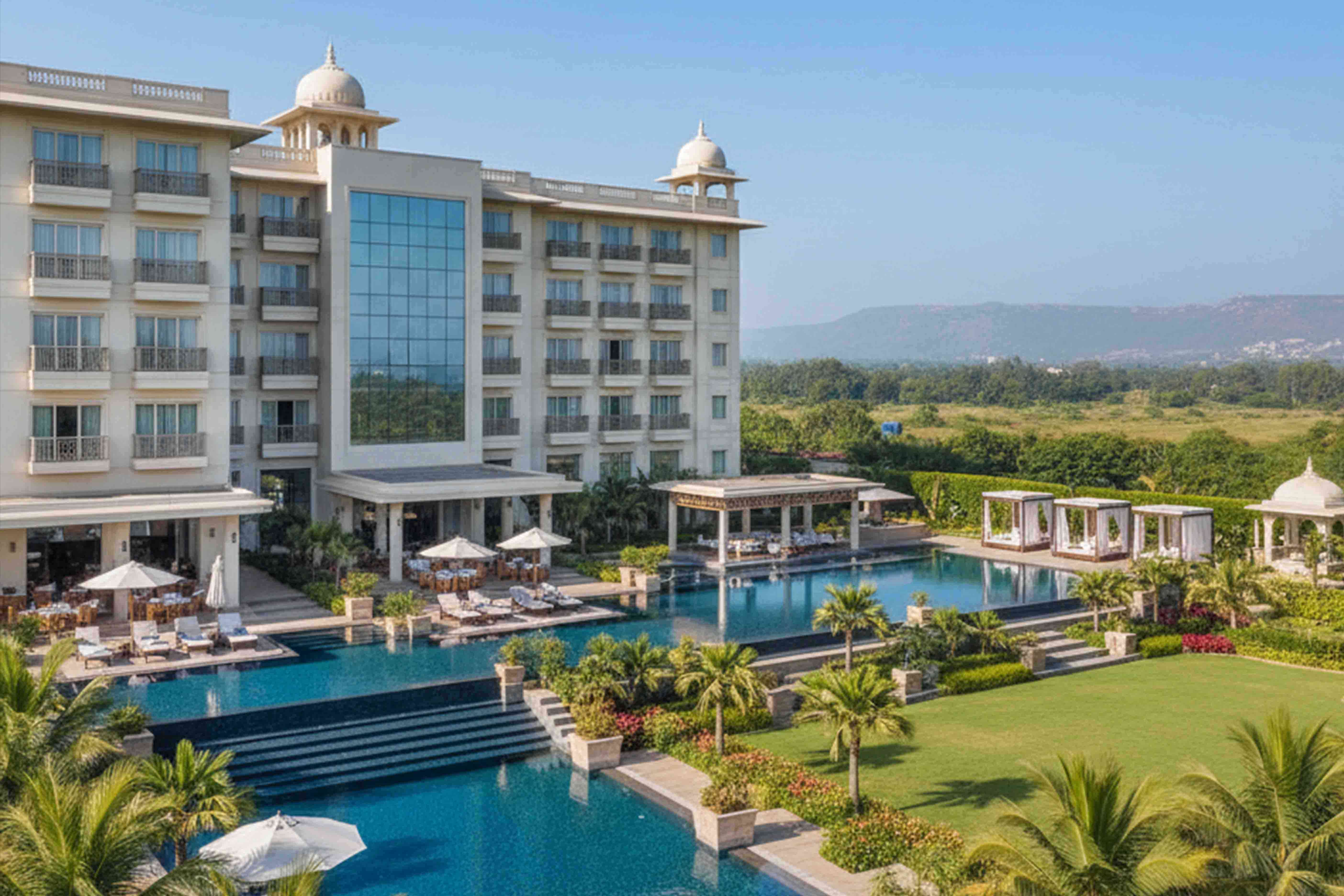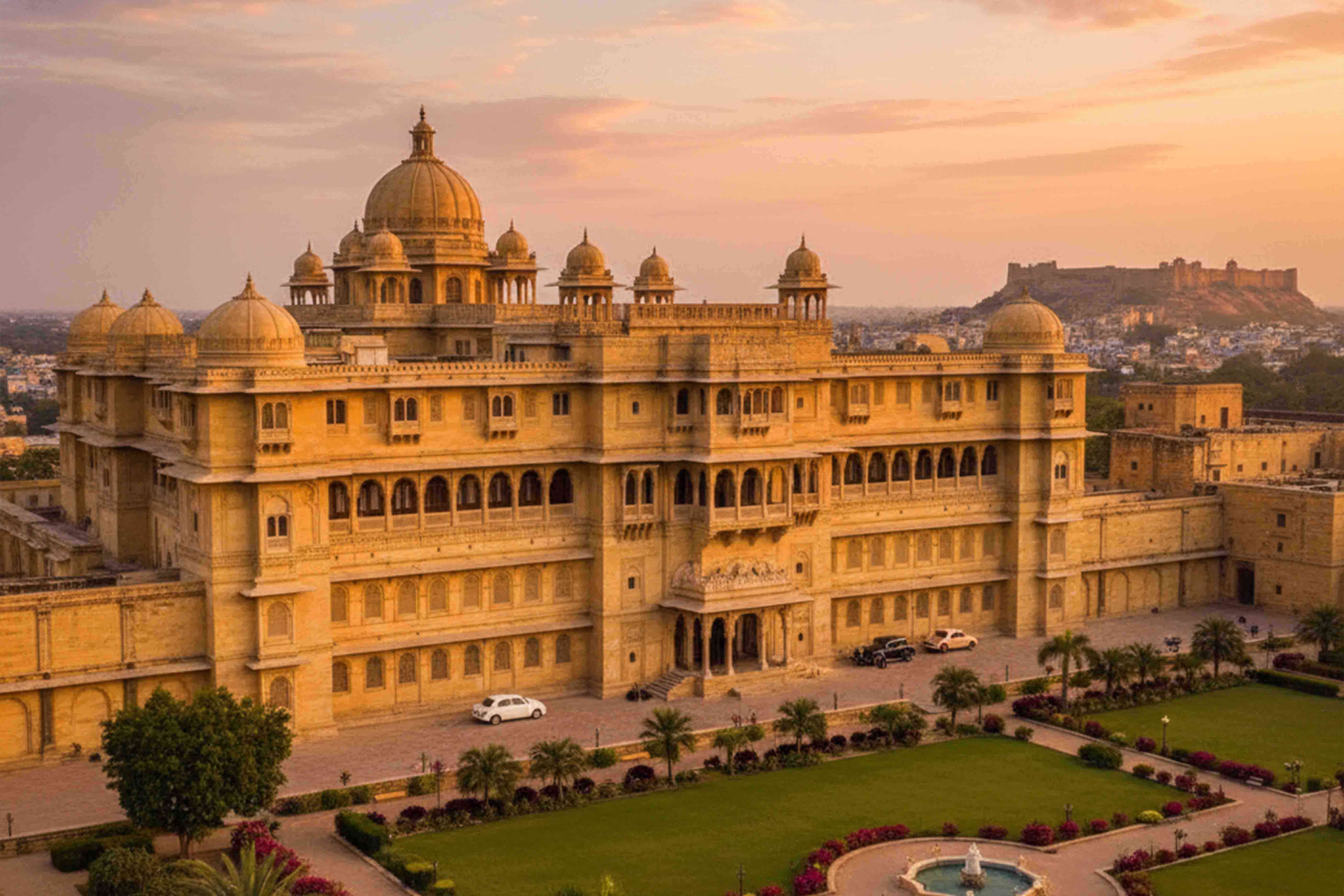
The Rise of Noida: From Industrial Hub to Smart City
- City Noida
- October 10, 2025
- 290 views
“Cities are not just built — they evolve.”
Noida’s story is one of transformation: from dusty industrial terrains to sleek expressways, buzzing metros, and aspirational smart-villages. Let’s take a ride through how Noida is reshaping itself, and what the future holds.
1. Industrial Roots — The Foundation
Noida (New Okhla Industrial Development Authority), conceived in 1976, was initially envisaged as an industrial town. Strategically located adjacent to Delhi, with good road connectivity and open space, it attracted factories, warehouses, and manufacturing units. For years, that industrial identity defined Noida: heavy goods, blue collars, industrial layouts, and infrastructure built around heavy transportation.
That foundation – proximity to Delhi plus deliberate industrial zoning – gave Noida something many new cities chase: space to expand, and the possibility to plan ahead.
2. Tipping Point: Infrastructure & Connectivity
As India moved into the 1990s and 2000s, Noida started to get more infrastructural investments: roads were widened, utilities improved, residential sectors developed. But the recent decade has seen exponential change, especially in:
a) Metro & Mass Transit
The Metro (Delhi Metro + Noida Metro) network slowly expanded to connect key Noida sectors with Delhi, Greater Noida, and other NCR areas. The Aqua Line (Noida-Greater Noida Metro) is getting extended from Sector 51 towards Knowledge Park V. This expansion includes 11 stations and is aimed at improving intra-city and inter-city access.
b) Expressways & Roads
The Yamuna Expressway — a 165-km, six-lane corridor connecting Greater Noida to Agra — is not just a road but a catalyst for industrial, real estate, and institutional growth along its stretch. The FNG Expressway (Faridabad-Noida-Ghaziabad) is designed to reduce travel times significantly and improve regional connectivity. Other elevated roads, underpasses, and signal-free corridors like the Bhangel and Chilla elevated roads are being developed or fast-tracked to decongest traffic and ease commuting.
c) Mobility Strategy: Planning for the Future
With projected population growth (Noida + Greater Noida + Yamuna Expressway area expected to hit around 6.6–7 million by 2031), authorities are working on a Comprehensive Mobility Plan (CMP). This covers public transport, freight movement, multimodal connectivity, origin-destination traffic, etc. The aim is to reduce travel times, integrate infrastructure, manage congestion, and make mobility sustainable.
3. Smartness: Beyond Bricks & Roads
Infrastructure is necessary, but a smart city needs more: intelligent systems, civic utilities, governance, and citizen-friendly amenities. Noida is pushing in that direction through several initiatives.
Under the Smart Villages Project, YEIDA is planning to develop nearly 29 villages off the Yamuna Expressway with proper roads, sewerage, electricity, and digital facilities like smart libraries. In waste management, the Noida Authority has approved a 300-tonne-per-day (TPD) plant to convert waste into bio-CNG, along with other waste-to-energy initiatives. To meet increasing energy demands, two new 220 kV substations are being constructed in Sector 155 (Noida) and Ecotech 16 (Greater Noida). Additionally, a ₹450-crore Tech Hub is being developed near the upcoming Noida International Airport in Sector 10, which is expected to generate nearly 31,000 jobs.
4. Challenges & Growing Pains
Of course, transformation comes with friction. Some of Noida’s challenges include congestion and long travel times even with its growing network of roads and expressways. The city also faces concerns about safety on expressways and occasional infrastructure gaps in its peripheral sectors, where last-mile connectivity remains weak. Moreover, the coordination among multiple development authorities—Noida, Greater Noida, YEIDA, and NCR planning bodies—often slows down unified execution.
5. The Jewar Effect & What’s Next
Perhaps the most potent symbol of Noida’s next leap is the Noida International Airport at Jewar. Scheduled to open partially in 2025, the airport is expected to serve over five million passengers annually in its first phase. Its establishment is already reshaping land values and driving a boom in real estate, logistics, hospitality, and tech industries. Connectivity projects such as new expressways, elevated roads, and metro expansions are being fast-tracked to link the airport seamlessly with the rest of NCR, positioning Noida as the gateway to North India’s economic growth.
6. Vision of a Smart Noida — Imagining 2030 and Beyond
As all these developments take shape, Noida’s vision for 2030 and beyond is both ambitious and achievable. The city is evolving into a model of integrated mobility, where metro lines, expressways, and elevated corridors work in harmony to create smooth, quick, and sustainable transportation. Residents could travel from one end of Noida to Delhi in under an hour, supported by electric buses, shared mobility options, and improved last-mile connectivity.
Green and sustainable infrastructure will form the city’s backbone — with solar rooftops, efficient waste management systems, and a network of parks and water bodies ensuring environmental balance. Digitization will play a crucial role too, with smart governance tools like real-time traffic and pollution monitoring, digital health services, and e-governance systems simplifying civic life. Economically, Noida is expected to emerge as a major powerhouse of North India, hosting thriving tech parks, manufacturing clusters, logistics hubs, and a growing startup ecosystem. Most importantly, the focus will remain on inclusive urban growth — ensuring that peripheral sectors and underdeveloped areas receive the same access to infrastructure, housing, and civic services as the central city zones.
Conclusion
What began as an industrial satellite of Delhi is steadily becoming something much more ambitious: a networked, modern, smart city that’s testing what’s possible in urban India. The roads, metros, airports and tech hubs are more than infrastructure — they are the scaffolding of future lives: where people can live farther from the centre without feeling disconnected; where public amenities are expected, not luxuries; where growth is not just vertical, but inclusive.
Noida’s rise isn’t done. Some roads still need fixing. Some promises need delivering. But link by link, project by project, the city is redefining its identity. From factories and warehouses, it is fast becoming a city of opportunity, connectivity, and possibility.







